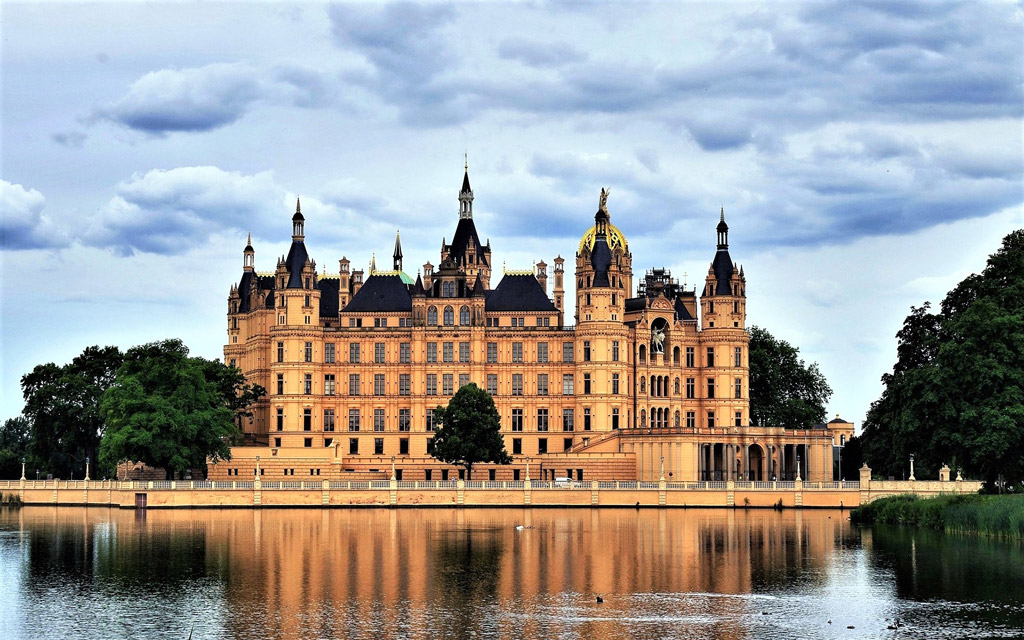Famous renaissance buildings in Europe. Famous renaissance architecture examples and characteristics. Here are the world’s most important examples of Renaissance architecture and its characteristics:
You’ve probably seen many of the famous renaissance architecture examples through movies made about famous renaissance artists and architects. The renaissance movement, financially supported by the aristocratic part of Italy, which became wealthy and prosperous thanks to trade at the beginning of the 15th century, showed its influence in many parts of the world, especially in Europe, until the end of the 16th century. Renaissance architecture, which derives from the Italian word “rinascita” meaning “rebirth”, first appeared in Italy. Afterwards, he fascinates himself with his impressive renaissance buildings created in many countries such as France, Germany and England.
In this article, we shared the famous renaissance architecture examples and their features. Here are the most famous renaissance buildings in Europe…
Note: You can read our “Renaissance Style Architecture Characteristics” article to learn the answers to questions ‘What is Renaissance?’, ‘When, where and how did Renaissance architecture emerge?’, ‘What are the characteristics of Renaissance architecture?’.
Contents
Famous Renaissance Buildings
1. Florence Cathedral, Florence, Italy
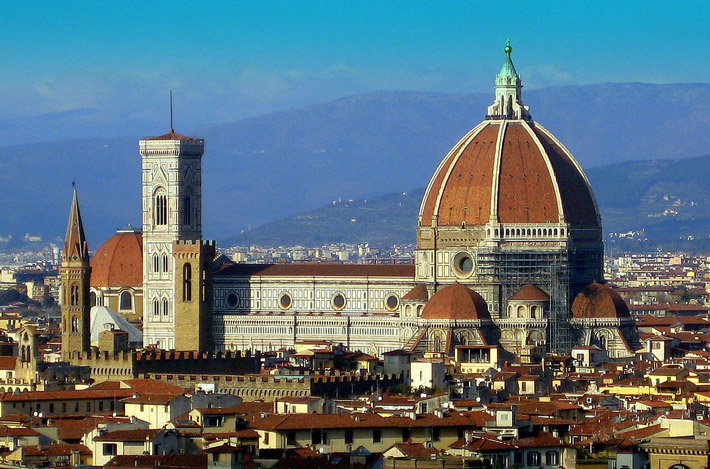
The Florence cathedral, which was built between 1296 and 1436, with its better known names “Duomo” or “Santa Maria del Fiore” was first designed as a gothic building. The cathedral, which has undergone different changes over a period of approximately 150 years, has taken its place in history as the first important renaissance building, with the completion of the unfinished dome by Flippo Brunelleschi, the first architect of the Renaissance period. Florence Cathedral, which is remembered by many of the known paintings with its dome and night lighting, is accepted by the whole world as a very important work for the city. At the same time, it has been one of the most defining icons for other Renaissance cities with its dome structure.
2. The Marciana Library / Library of Saint Mark, Venice, Italy

Located in Venice’s San Marco square, the Marciana library is architect Jacopo Sansovino’s best-known masterpiece. Built between 1537 and 1588, this library is a very important example of Venetian renaissance architecture. Known as one of the oldest surviving public libraries, the Marciana library still has one of the most impressive collections of classical texts in the world. The Marciana library now serves as a museum for tourists visiting Venice.
3. Basilica of Santa Maria Novella, Florence, Italy
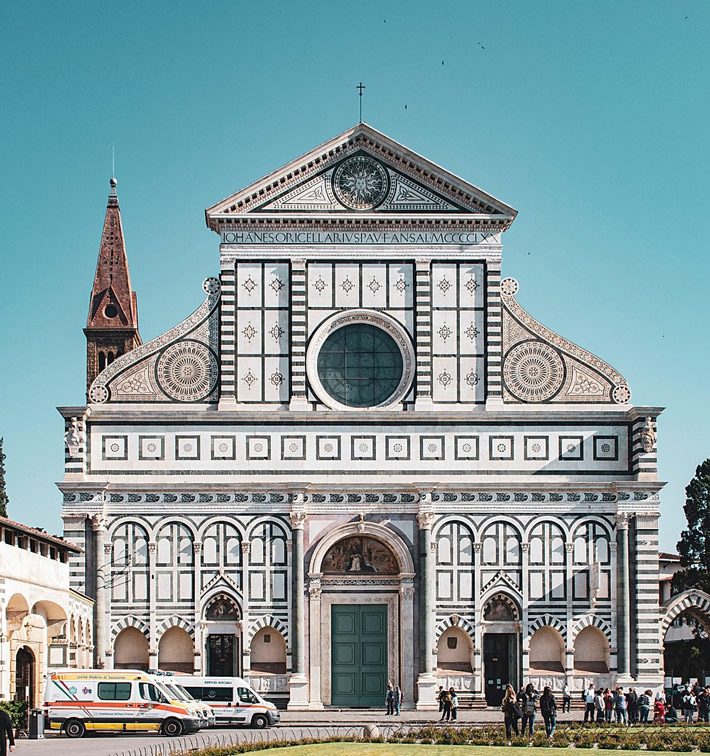
The Basilica of Santa Maria Novella, the first major basilica built in Florence, is known as one of the first important renaissance architecture examples in Italy. The façade of the building was designed in 1470 by the famous renaissance architect Leon Battista Alberti. The basilica, which makes a difference with its elegant and proportional marble details, contains oil paintings of importantrRenaissance artists of the period.
4. St. Peter’s Basilica, Rome, Italy

St. Peter’s Basilica, known as “San Pietro’s Basilica”, is the most important building in the world among the famous renaissance buildings. St. Peter’s Basilica, which serves as the largest church of the Christian world in the Vatican, is established on an area of 23.000 m2 and has a capacity of approximately 60.000 people. Known for its magnificent dome, the building has a great importance for Christians.
5. Uffizi Gallery, Florence, Italy

The Uffizi museum, which is one of the most important and valuable museums in Italy and even in the world, was designed and started to serve as an office structure in the 1560s when it was first built. Later, in the 1580s, living areas were added to the building on the upper floors for families. The Uffizi Museum is one of the most visited art museums in Italy, with its two-storey structure with a “U” shaped plan. The museum, which contains many world-famous works of art, is home to the art collection of the famous Medici family. We would like to remind you that tickets must be purchased months in advance to visit this valuable museum located on the banks of the Arno river.
6. Pitti Palace, Florence, Italy
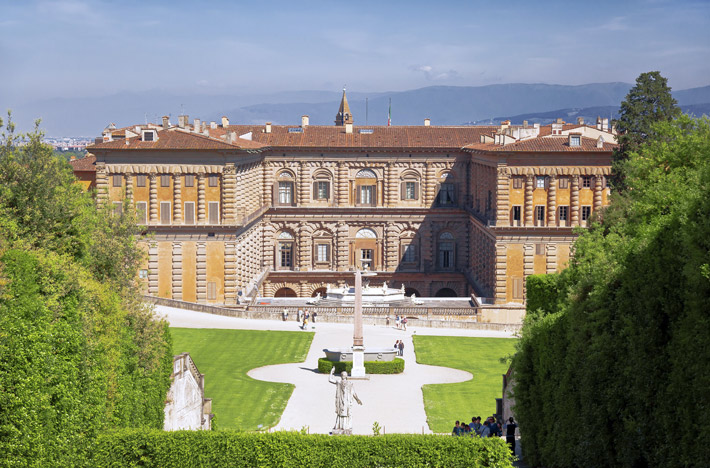
Another impressive renaissance building located in Florence, known as the capital of the renaissance. The palace, which was designed by the architect Brunelleschi as the living space of the Pitti family in 1458, is located on the south side of the Arno river. Pitti Palace was purchased by the Medici family in 1549 and for a long time hosted the rulers in Tuscany. The palace, which has a very large campus in Florence, was also used by Napoleon for a period in the 18th century. Pitti Palace, which has a very important history for the history of Italy and is one of the largest palaces of the renaissance period in Florence, serves as an art gallery open to the public today.
7. Château de Chambord, Chambord, France
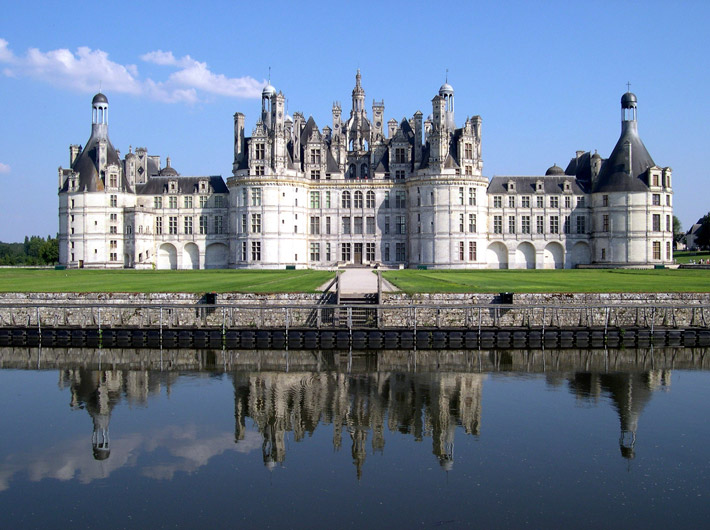
Built in 1519 as a hunting lodge for Francis I, the castle is located in the north of France. The architect of this important building, which is among the architectural works of the French renaissance period, is not known for sure, but it is claimed that the design was made by Leonardo Da Vinci. The castle, which is quite large, has large gardens. On the roof of the castle, which is an architectural wonder, which has four large main towers; There are 11 different towers, 3 types of chimneys and several domes. The symmetry in its design is another striking feature of the building.
8. Basilica di San Lorenzo, Florence, Italy
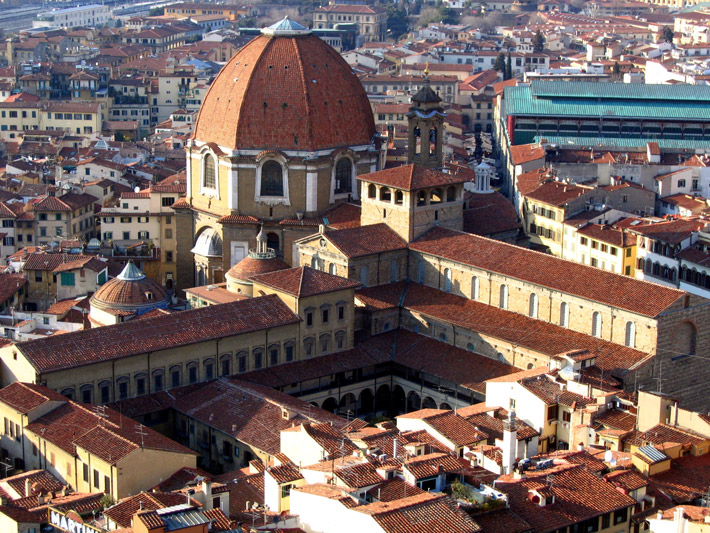
Containing the architectural genius of Michelangelo and the last works of art by Donatello, the Basilica of San Lorenzo is considered one of the best renaissance buildings. The basilica, the construction of which began in 1419 under the direction of Brunelleschi, was completed in the 1480s. Located in the main market area in Florence city centre, this great basilica is also the burial place of all important members of the Medici family, from Cosimo il Vecchio to Cosimo III.
9. Schwerin Castle, Schwerin, Germany
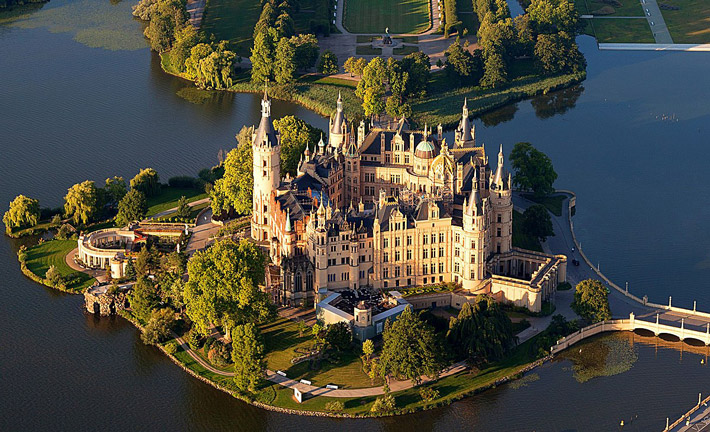
The building, which was originally built as a castle in 1160, was revived as a palace in the mid-16th century on the basis of French renaissance architecture. It took its current form after the restoration made by Georg Adolph Demmler in the 19th century. Built on an island in Lake Schwerin, the palace has an extraordinary beauty that does not look like movie scenes. The palace, which is currently used as a state building, served as a school in the past.
10. Château de Chenonceau, Chenonceaux, France
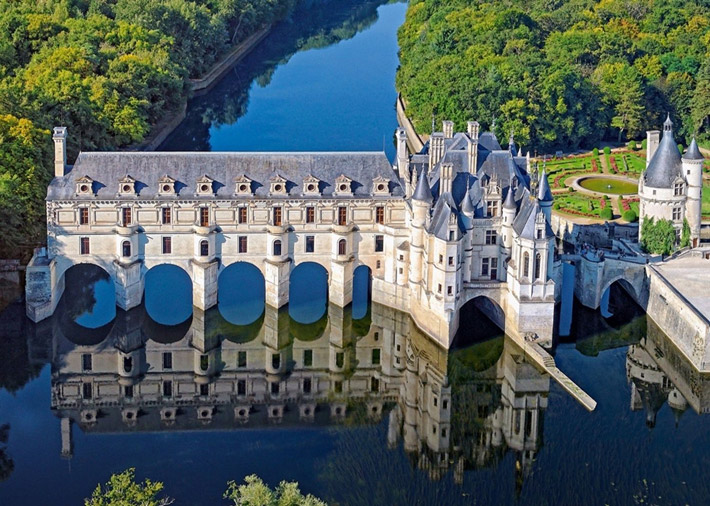
This interesting work, which has the distinction of being the second most visited chateau in France after the Palace of Versailles, was built in the 16th century by the French renaissance architects Philibert de l’Orme and Jean Bullant. Consisting of a bridge and a castle on the river Cher, this structure is a mixture of late gothic architecture and renaissance architecture. The castle, which is open to the public with its castle and gardens, is an important visiting point in France.
Other Famous Renaissance Buildings
11. Château d’azay-le-Rideau, France

Located on an island in the middle of the Indre river, Château d’Azay-le-Rideau was built between 1518 and 1527 and is considered one of the most important works of architecture of the French renaissance period. The building, which was originally built as a castle in the 12th century, remained in ruins for a long time. Later, in 1518, it was purchased by the municipality of the period and it became the magnificent state it is today. The rebuilding process of the castle was very difficult as it did not have a hard and solid ground.
12. Heidelberg Palace, Heidelberg, Germany

The castle, which is the symbol of the city of Heidelberg, located in the north of the Alps in the south-west of Germany, was among the most important architectural works of the renaissance period when it was built. At an altitude of 80 meters on the north side of the Königstuhl slope, the castle has an impressive view of the entire old city centre. The great lightnings that struck the castle in 1537 and 1764 caused great damage to this beautiful structure. Only a certain part of the castle, which was damaged as a result of various wars and destructions, was rebuilt and continues to serve the visitors today.
13. Johannisburg Palace, Aschaffenburg, Germany

Located in the Bavarian region of Germany, the Johannisburg Palace is one of the most famous renaissance buildings of Germany. The palace, which was built by architect Georg Ridinder between 1605 and 1614 as the second residence of Mainz Archbishop Johann Schweikhard von Kronberg, has a very impressive architecture.
14. El Escorial, Madrid, Spain
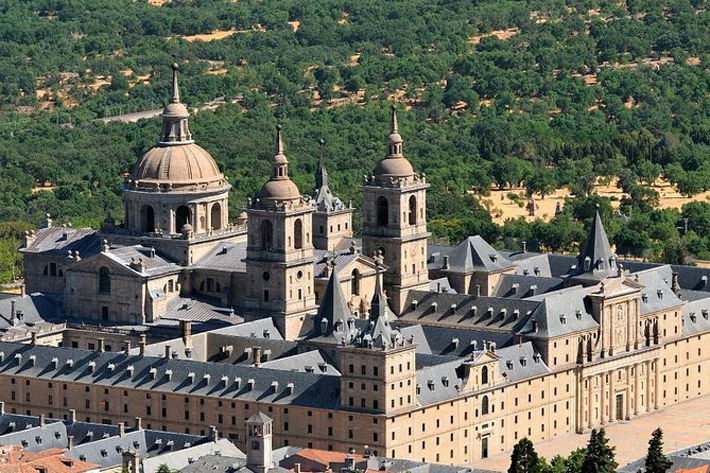
Located on the slope of the Sierra de Guadarrama mountain in the Madrid region, this monastery was built by the Spanish as St. Due to the defeat of the French in the Quentin War, the king of the period II. It was built by Felipe to symbolize the power of the Spanish monarchy. The monastery, which was started to be built in 1563 by the architect Juan Bautista de Toledo, was completed in 1584. The building, which is also one of the largest libraries in the world, preserves a large number of Arabic manuscripts.
15. V. Palace of Charles, Granada, Spain

In 1492, a great power changed hands in the region with the capture of Granada by the Spaniards. At that time, the Spanish monarchy was ruled from within the Alhambra palace in Granada. However, Karl V wanted to have a new palace built within the Alhambra palace. This palace, designed by Pedro Machuca and reflecting the architecture of different periods, could not serve its purpose and host the monarchy. Even the roof of the palace was completed in 1957.
16. Queen’s House, London, England

The building, which the famous architect Inigo Jones, known for his works on renaissance architecture in England, started to design after his great tour of Italy, was built as a royal residence between 1616 and 1635 and made a difference with its unique architecture in its period. The ‘Queen House’ built in the Greenwich area today serves as a maritime museum. The building, which is also used for special events, awaits its visitors in London with all its beauty.
17. Hardwick Hall, Derbyshire, England
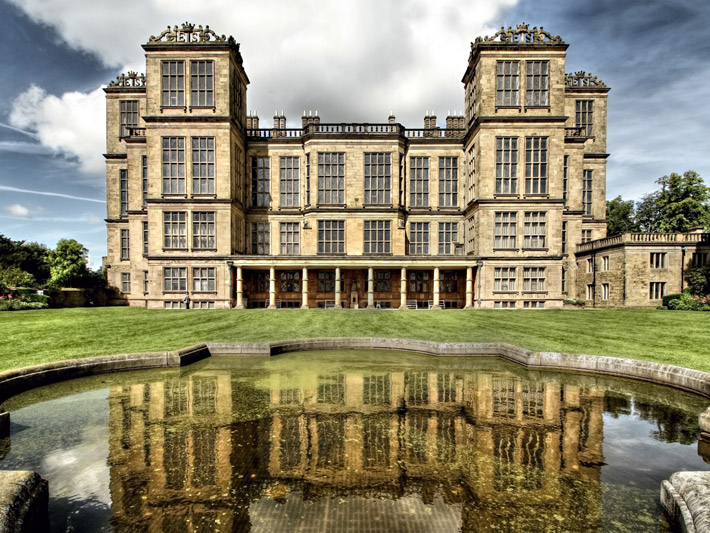
Built between 1590 and 1597 by Robert Smythson, one of the famous British architects of the Renaissance period, this beautiful country house is one of the best renaissance buildings. Perched on a hill between Chesterfield and Mansfield overlooking the Derbyshire countryside, Hardwick Hall was built by Hardwick Bess, who was the wealthiest woman in England at the time after Elizabeth. The country house, which serves as a museum today, is open to visitors.
18. Villa Farnese, Caprarola, Italy
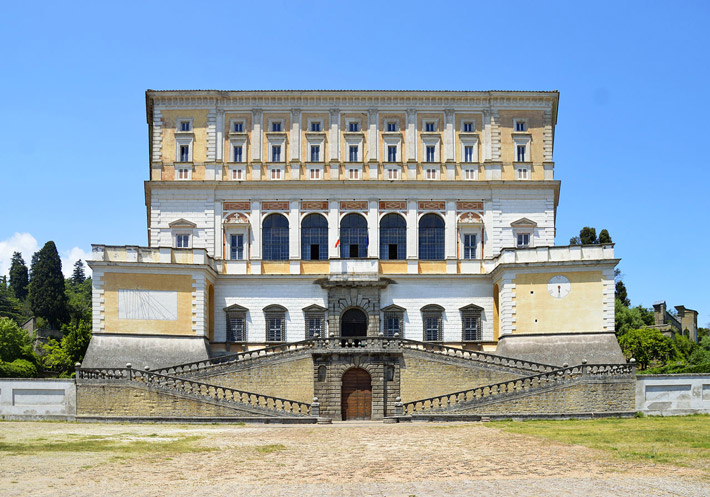
This building, which is one of the famous renaissance buildings with its interesting entrance, is located in the north of Lazio in Italy. Its construction began in 1559. The villa, which draws attention with its reddish stones, was built in the form of a structure with a pentagonal plan. A part of the building, which was designed more simply as a reaction to the ornate early examples of the renaissance, is open to visitors.
19. Krasiczyn Castle, Krasiczyn, Poland
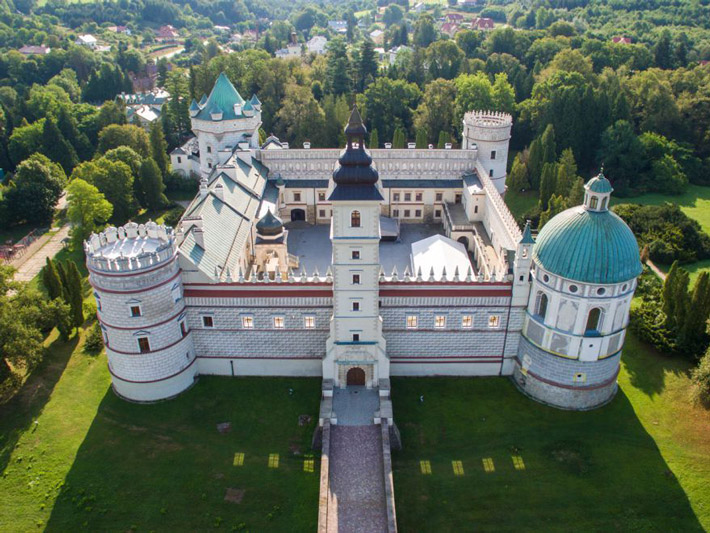
The building, which was started to be built as a castle in 1580, was completed in 1633 as one of the most beautiful renaissance buildings in Poland, with the impressive touches of the Italian architect Galeazzo Appiani. Krasiczyn Castle stands out with its regular architectural structure and exterior made of white stones. The building, which was damaged in the 2nd World War, now welcomes its visitors through the hotel next to it.
In this article, we shared the most famous renaissance buildings in Europe. If there are any other famous renaissance architecture examples that you think should be on our list, please share them with us in the comments. Don’t forget to visit our homepage for inspiration on different topics related to interior design & architecture! 🙂

